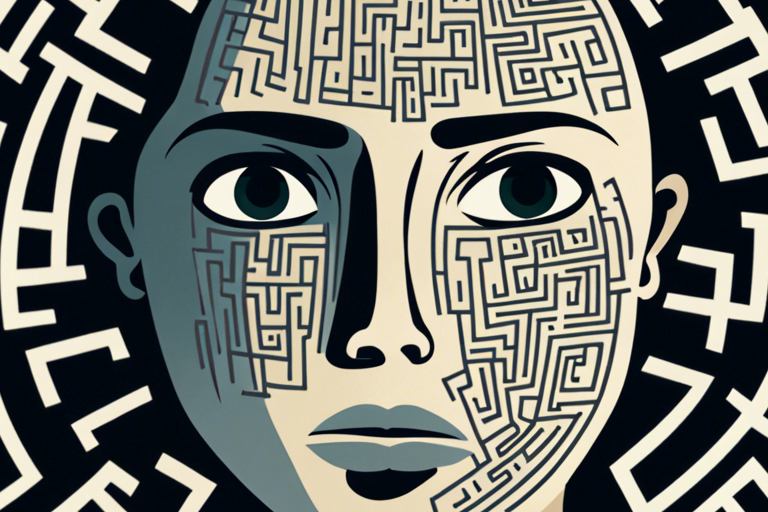Demystifying the Development of Borderline Personality Disorder
Understanding Borderline Personality Disorder (BPD)
Borderline Personality Disorder (BPD) is a complex and often misunderstood mental health condition. It is characterized by patterns of unstable relationships, intense emotional reactions, and a lack of consistent life trajectory. While it can be challenging to understand the development and experience of BPD, gaining knowledge about the disorder is crucial in order to support individuals who are affected by it.
Dispelling Myths and Misunderstandings
There are many misconceptions and stereotypes surrounding BPD that contribute to the stigma surrounding the disorder. One common myth is the belief that individuals with BPD are manipulative and prone to lying. However, it is important to recognize that these behaviors are not inherent to the disorder itself, but may be coping mechanisms that individuals with BPD have developed in response to their emotional struggles.
The media also plays a role in the portrayal of BPD, often presenting it in an inaccurate and sensationalized manner. This further perpetuates misunderstandings and reinforces negative stereotypes. It is essential to challenge these misconceptions and focus on accurate and compassionate representations of individuals living with BPD.
External Manifestations of Borderline Personality Disorder
One of the key external manifestations of Borderline Personality Disorder is the presence of unstable relationships. Individuals with Borderline Personality Disorder may struggle to maintain healthy and consistent connections with others, often experiencing intense fear of abandonment. This fear can lead to impulsive behaviors such as clinginess or pushing loved ones away, as individuals attempt to cope with their overwhelming emotions.
Strong emotional reactions are another characteristic of Borderline Personality Disorder. Individuals may experience intense mood swings and have difficulty regulating their emotions. Small triggers can result in significant emotional distress, leading to outbursts of anger or sadness. These emotional reactions may seem disproportionate to outsiders, but they are valid and real for individuals with Borderline Personality Disorder.
The lack of a consistent life trajectory is also prevalent among individuals with Borderline Personality Disorder. They may struggle with establishing and maintaining long-term goals, leading to a sense of confusion and instability in various aspects of their lives. This can create a cycle of self-doubt and frustration, making it challenging to pursue personal growth and development.
Internal Experience of Borderline Personality Disorder
Living with BPD can be incredibly challenging, and individuals with the disorder often experience significant internal turmoil. One of the most common struggles is the fear of abandonment. This fear is rooted in deep-seated insecurities and can intensify feelings of emptiness and worthlessness. Individuals may go to great lengths to avoid abandonment, even sacrificing their own well-being or personal boundaries.
Intense emotional suffering is another hallmark of Borderline Personality Disorder. Individuals may experience frequent and overwhelming mood swings, ranging from extreme highs to debilitating lows. This emotional rollercoaster can make it difficult to maintain stability in daily life and can impact relationships, work, and overall well-being.
Feelings of emptiness are common among individuals with Borderline Personality Disorder. They may describe a sense of hollowness or a lack of identity. This emptiness can lead to self-destructive behaviors as individuals seek to fill the void and escape the pain. It is important to approach individuals with empathy and understanding to help them navigate these internal struggles.
Dissociation is another internal experience frequently reported by individuals with BPD. This phenomenon involves a disconnect from reality, where individuals may feel disconnected from themselves or their surroundings. Dissociation can be a coping mechanism in response to intense emotional distress, providing a temporary escape from overwhelming thoughts and feelings.
Factors Contributing to the Development of Borderline Personality Disorder
The development of Borderline Personality Disorder is influenced by a combination of genetic, neurological, and environmental factors. Research suggests that individuals with a family history of mental health conditions, including BPD, may be more vulnerable to developing the disorder themselves. This indicates a potential genetic component that predisposes individuals to Borderline Personality Disorder.
Another contributing factor is the presence of an invalidating environment during childhood or adolescence. Invalidating environments are characterized by a lack of emotional support, dismissing or minimizing feelings, and a failure to validate an individual’s experiences. Growing up in such an environment can hinder the development of healthy coping mechanisms and emotional regulation skills, increasing the risk of developing Borderline Personality Disorder.
It is important to acknowledge that the interaction between biology and environment plays a significant role in the development of Borderline Personality Disorder. While genetic and neurological vulnerabilities may increase the risk, the impact of environmental factors cannot be understated. The combination of a vulnerable individual and an invalidating environment can create a fertile ground for the development of Borderline Personality Disorder.
Emotional Responsiveness and Dysregulation
Individuals with BPD often exhibit increased emotional responsiveness, meaning they have heightened sensitivity to emotional stimuli. This means that they may react more strongly to emotional triggers, whether positive or negative. This heightened emotional responsiveness can lead to intense emotional experiences, making it challenging for individuals to regulate their emotions effectively.
Dysregulation of the stress system is another key aspect of Borderline Personality Disorder. Individuals with the disorder may have an overactive stress response, resulting in increased sensitivity to stressors. This can lead to difficulty managing daily stressors and a heightened susceptibility to experiencing emotional dysregulation.
Moreover, individuals with Borderline Personality Disorder often exhibit a heightened sensitivity to negative emotions in others. This can make it challenging for them to navigate social interactions, as they may easily absorb and internalize the negative emotions of those around them. It is essential to approach individuals with empathy and understanding, recognizing the impact that these heightened sensitivities can have on their emotional well-being.
Effective Treatment and Prognosis
Although BPD can be a challenging condition to manage, there is hope for individuals seeking treatment. Dialectical Behavioral Therapy (DBT) is widely recognized as one of the most effective treatments for Borderline Personality Disorder. It focuses on teaching individuals skills to regulate their emotions, improve interpersonal relationships, and develop a sense of identity. DBT empowers individuals to navigate the challenges associated with Borderline Personality Disorder and build a more fulfilling life.
With appropriate treatment and support, individuals with Borderline Personality Disorder can experience remission and positive results. While Borderline Personality Disorder is considered a chronic condition, research shows that symptoms can improve over time, and individuals can lead fulfilling lives. The presence of stable relationships, both personal and professional, plays a vital role in the recovery process, providing a consistent support system and fostering a sense of belonging.
Developing a sense of identity is another crucial aspect of effective treatment. Individuals with Borderline Personality Disorder often struggle with an unstable self-image, and treatment helps them explore their interests, values, and goals, ultimately fostering a stronger sense of identity and purpose.
It is important to note that the prognosis varies from person to person. Recovery from Borderline Personality Disorder is a journey, and individuals may experience setbacks along the way. However, with ongoing therapy, support, and effective coping mechanisms, individuals can achieve significant improvement in their quality of life and overall well-being.

Conclusion
Understanding Borderline Personality Disorder is crucial for breaking stigmas and offering support to individuals affected by the disorder. By dispelling myths and misconceptions, we can foster a more compassionate and empathetic society. It is essential to offer encouragement and hope for recovery, highlighting effective treatment options such as DBT and emphasizing the importance of stable relationships and a sense of identity in the healing process. By working together, we can create a culture of understanding and support for individuals living with Borderline Personality Disorder.


